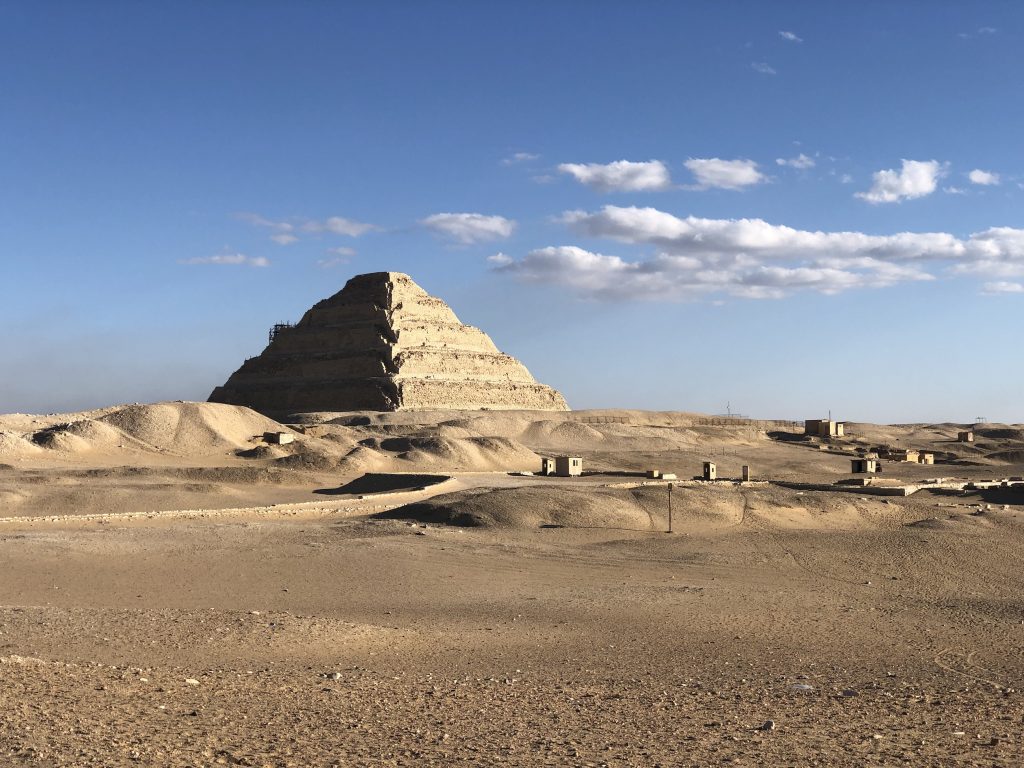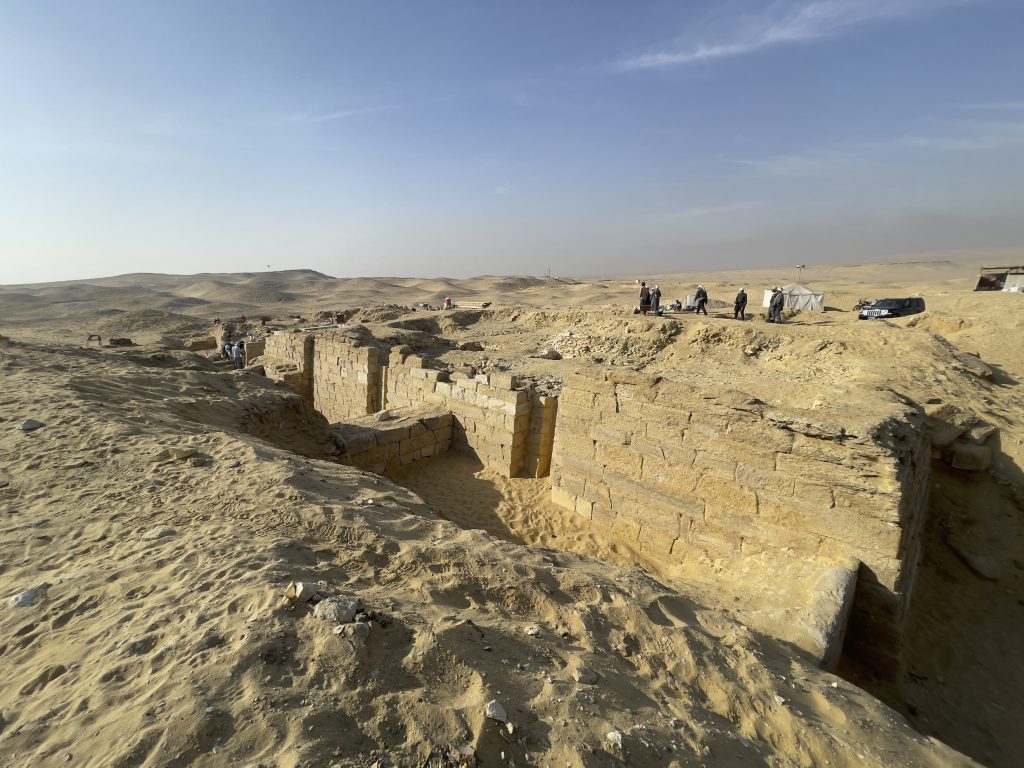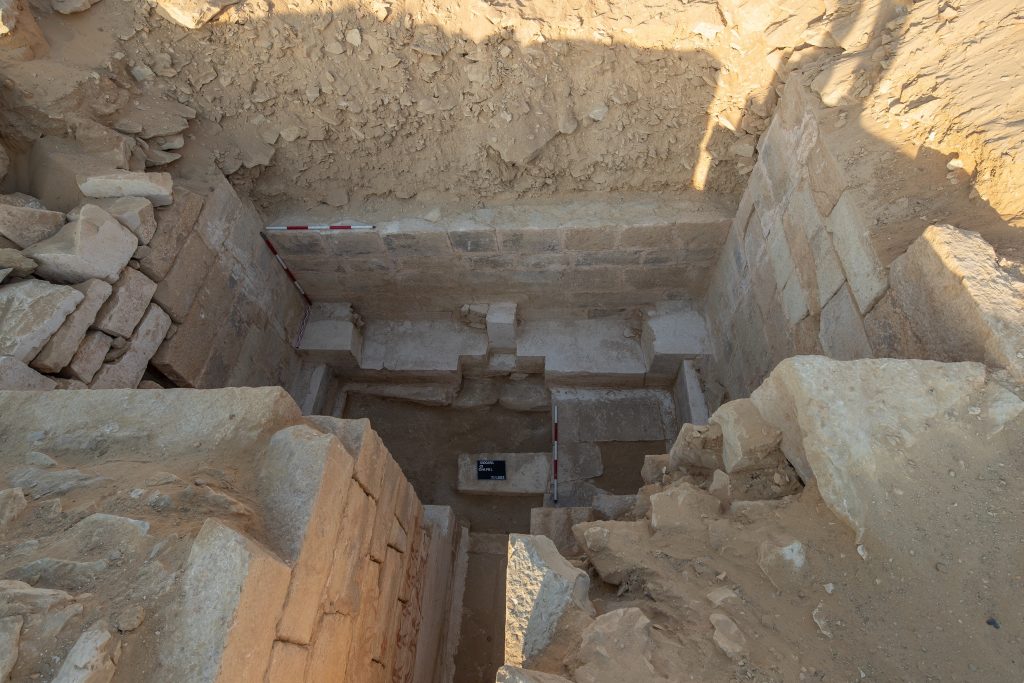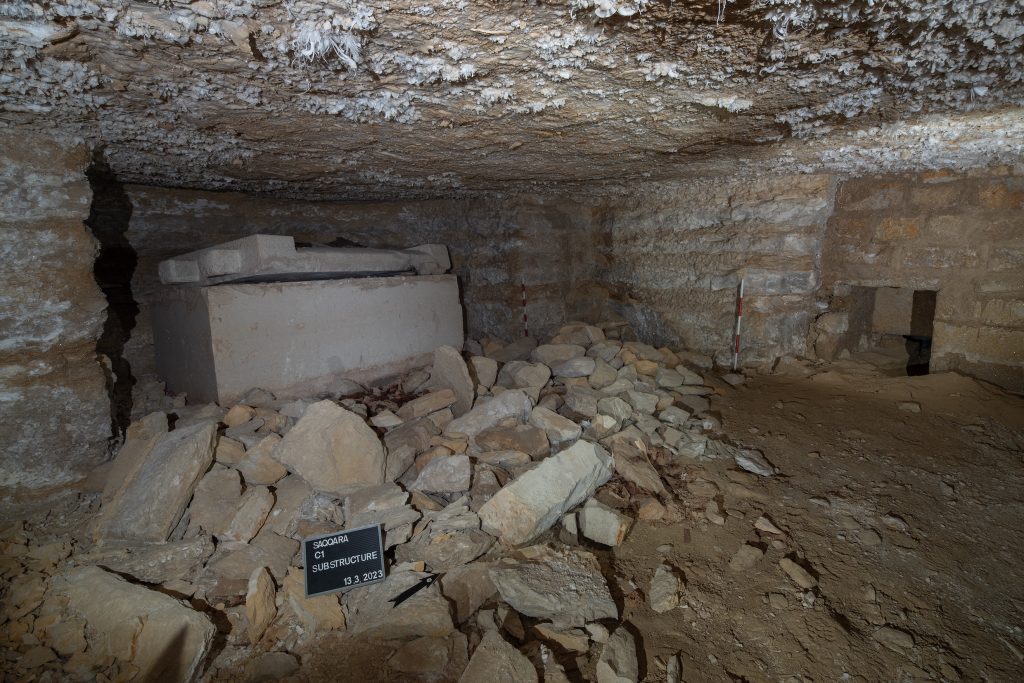Czech mission of the Czech Institute of Egyptology at CU FA working in the transitional zone between the pyramid fields of Abusir and Saqqara has made a rare discovery. During two archaeological seasons of 2022 and 2023 it located and thoroughly explored a lost tomb which belonged to a high official Ptahshepses living during the 25th and 24th centuries BC. This mastaba was partially exposed by a French scholar Auguste Mariette almost 160 years ago. Mariette extracted from the cult chapel Ptahshepses’s his monumental false door and a lintel originally placed above the entrance into the cult chapel. Not long after the discovery, the tomb disappeared again under the sand of the Western Desert.

These two extraordinary monuments are today on display in the British Museum. The false door contains an extensive and unique biography of Ptahshepses’s official career. It tells the story of his education at the court of the last Giza ruler Menkaura and his marriage to Userkaf’s daughter, Princess Khamaat. Userkaf was founder of the Fifth Dynasty of sun kings. This reference itself indicates that Ptahshepses is the first known official of non-royal descent in Egyptian history who was given the privilege of marrying a royal daughter. On the lintel, there is also reference one of the earliest attestations of the god Osiris. And this makes the official Ptahshepses even more unique because he can be credited with the idea of introducing the famous god of the Egyptian afterlife into the Egyptian pantheon.
The tomb itself can be dated to the reign of Nyuserre. Given Ptahsepses’ political, historical, and religious significance, the tomb is one of the most remarkable discoveries of the recent periods in Egyptian archaeology. It also represents a highly important missing link between the relatively small mastabas with a single cult chapel and extensive family tombs such as the neighbouring tomb of Ty constructed roughly at the same time.
During excavation, an extensive 42 m long and 22 m wide superstructure of the mastaba was fully exposed and documented. It included a relatively well-preserved chapel with painted decoration in the entrance, two serdabs (rooms for the statues of the owner) a long access corridor. The mastaba is monumental, still reaching the height of more than 4 meters.
In the next archaeological field season in spring 2023, the burial chamber was examined. The entrance was formed by a twisted sloping passage leading to an entrance with a huge limestone blocking stone in situ.
The burial chamber was robbed in antiquity, but it still featured parts of the original burial equipment, including pottery, remains of votive offerings, canopic jars, and mummified fish (the first example of its kind). In the partially opened sarcophagus, still lying on its back, was a complete mummy of the official.
Upon examination of the mummy by Egyptian anthropologists, it can be said that it provides important new data on the evolution of mummification during the Old Kingdom pyramids age. Moreover, the results of the mummy analysis confirm the relatively high age anticipated for Ptahshepses based on his biography on the false door. According to it, he lived during the reign of six kings of the late Fourth and Fifth Dynasty: Menkaura, Shepseskaf, Userkaf, Sahura, Neferirkara and Nyuserre, and according to anthropologists, the man in the sarcophagus passed away at the age of at least 65 years.
“It was a difficult search lasting several years. Detailed satellite imagery of the area and the study of old maps led to the rediscovery of the tomb of Ptahshepses in 2022. The tomb of a man who changed the course of Egyptian history has thus been rediscovered, representing one of the expedition’s greatest recent discoveries. The research is still ongoing, and further discoveries will likely be made to shed new light on his family and his time,” says Miroslav Bárta, head of research at Abusir.
The research was supported by a grant of the American Research Center in Egypt.










